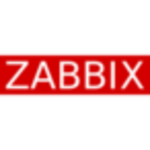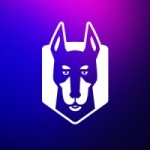What is our primary use case?
We were in need of a cloud monitoring tool that was operationally focused on the AWS Platform. We wanted to be able to responsibly and effectively monitor, troubleshoot, and operate the AWS platform, including Server, Network, and key AWS Services.
Tooling that highlighted and detected problems, anomalies, and provided best practice recommendations. Tooling that expedites root-cause analysis and performance troubleshooting.
Datadog provided us the ability to monitor our cloud infrastructure (network, servers, storage), platform/middleware (database, web/applications servers, business process automation), and business applications across our cloud providers.
How has it helped my organization?
Datadog provided us the tooling to help us effectively monitor, troubleshoot, and operate the AWS platform, including Server, Network, Database, and key AWS Services. It highlights detected problems and anomalies and provides best practice recommendations, expedites root-cause analysis, and performance troubleshooting.
Datadog provides analytics and insights that are actionable through out-of-the-box visualizations, dashboards, aggregation, and intuitive searching that shortens the time to value and account for our limited time & resources we have to operate in production.
What is most valuable?
The most valuable feature is the dashboards that are provided out of the box, as well as ones we were able to configure. Specific Dashboards that were provided that made things easier were EC2, RDS, Kubernetes dashboards.
We also use the logging tool, which makes searching for specific error logs easier to do.
Datadog Logging provides the capability for us to use AWS logs such as VPC Flow Logs, ELB, EC2, RDS, and other logs that provide lots of relevant operational data but are not actionable. Datadog provides a tool that can provide us analytics and insights that are actionable for visualizations, dashboards, alerting, and intuitive searching.
What needs improvement?
More pre-configured "Monitor Alerts" would be helpful. Datadog's knowledge of its customers and what they are looking for in terms of monitoring and alerting could be taken advantage of with pre-canned alerts. They have started this with "Recommended Monitors". That feature was very helpful when configuring our Kubernetes alerts. More would be even better.
Datadog tech support is very good. One area that could be more helpful is actually talking to someone or sharing your screen to help troubleshoot issues that arise. For new cloud engineers just coming into the cloud monitoring field, there is a learning curve. There is a lot to learn and figure out. For example, we still ran into some issues configuring the private link and more videos of how to do things could be of use.
Buyer's Guide
Datadog
October 2025
Learn what your peers think about Datadog. Get advice and tips from experienced pros sharing their opinions. Updated: October 2025.
872,655 professionals have used our research since 2012.
For how long have I used the solution?
We have been using Datadog for one year.
What do I think about the stability of the solution?
We have not run into any issues with stability.
What do I think about the scalability of the solution?
The scalability of Datadog is very good.
How are customer service and support?
Customer service has been excellent. I communicate weekly a Datadog Customer Success Manager. He helps me followup on any open issues or questions that we may have. Technical support has been very good. Opening tickets is easy. Sometimes a Tech Engineer may take a bit of time to get back with you. Communicating with Tech Engineer has to be done via ticket/email - no phone assistance is available.
Which solution did I use previously and why did I switch?
How was the initial setup?
Procedures for setup seemed straightforward but once you got going, there were some issues. For us, getting our private link to work needed additional tech support. They were able to help us resolve the issue we were experiencing. I think the procedures could be done a bit better to help you with setup.
What about the implementation team?
We deployed it ourselves.
What was our ROI?
Datadog helps us minimize downtime and helps us resolve issues quickly.
What's my experience with pricing, setup cost, and licensing?
Pricing seemed easy until the bill came in and some things were not accounted for. The issue may have been that we didn't realize what was being accounted for, such as the number of servers and the number of logs being ingested.
Datadog had really good pre-sale reps that work with us but need to make sure all the details are covered.
Which other solutions did I evaluate?
The solution we were looking for needed to provide out-of-the-box capabilities that shorten the time to value. We had limited time & limited resources. Datadog had high recommendations in these areas, so we decided to do a trial with them.
What other advice do I have?
We are very pleased with Datadog overall.
Datadog has assigned an account rep to us that meets with us regularly to make sure all our needs are being met and help us get answers to any questions or issues we are running up against. They have been of great helping us standup monitoring of our Kubernetes environment.
Which deployment model are you using for this solution?
Hybrid Cloud
If public cloud, private cloud, or hybrid cloud, which cloud provider do you use?
Amazon Web Services (AWS)
Disclosure: My company does not have a business relationship with this vendor other than being a customer.
















